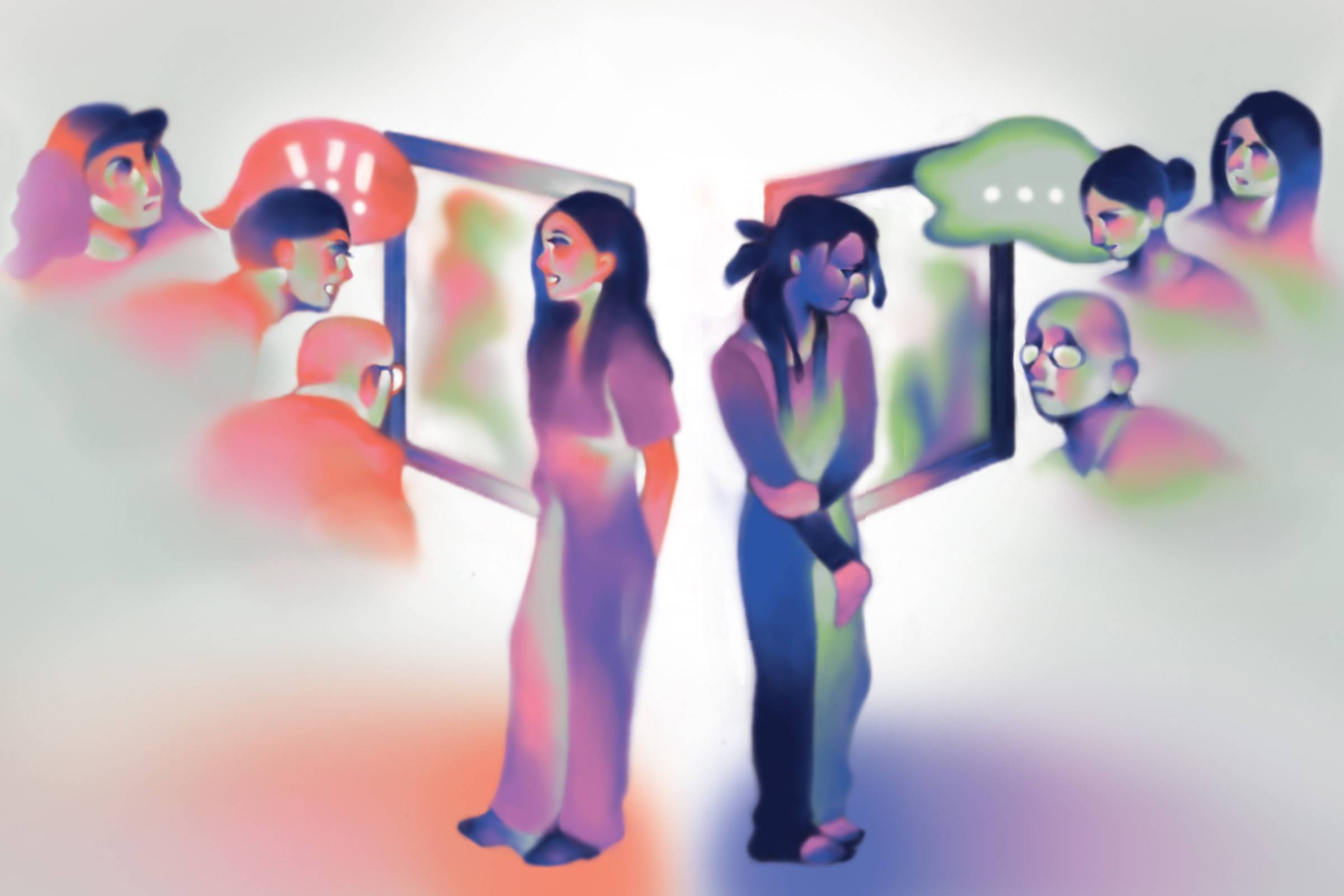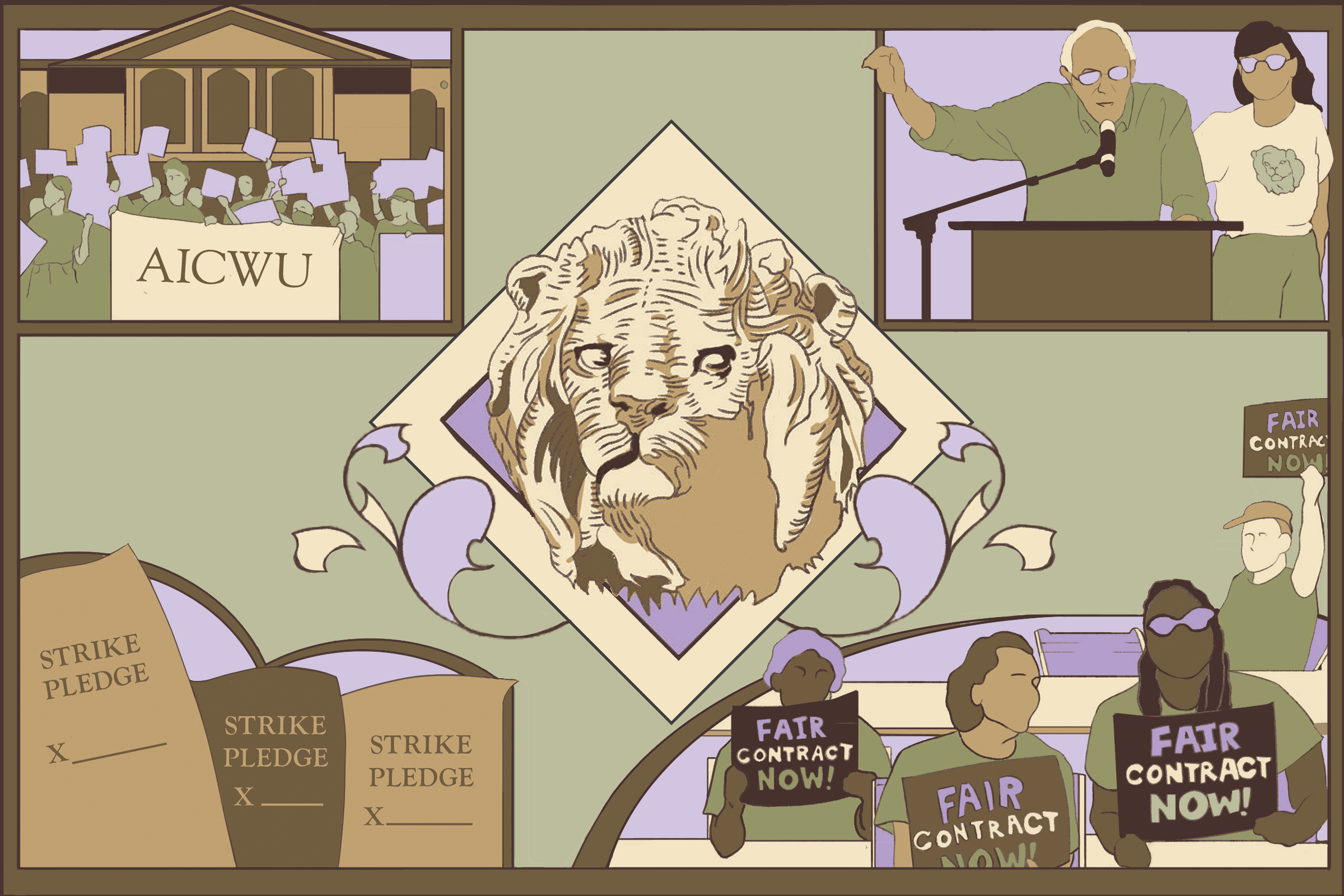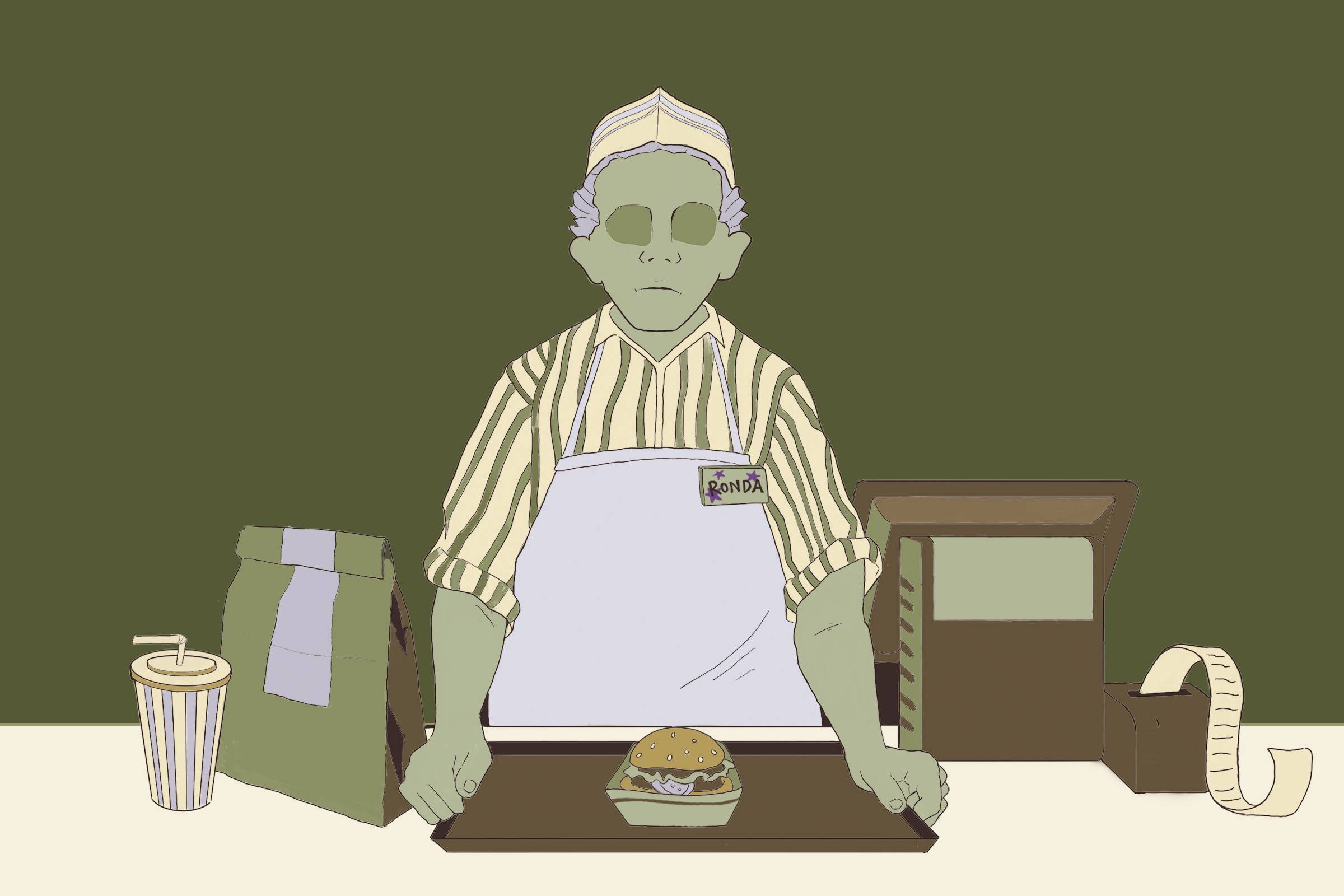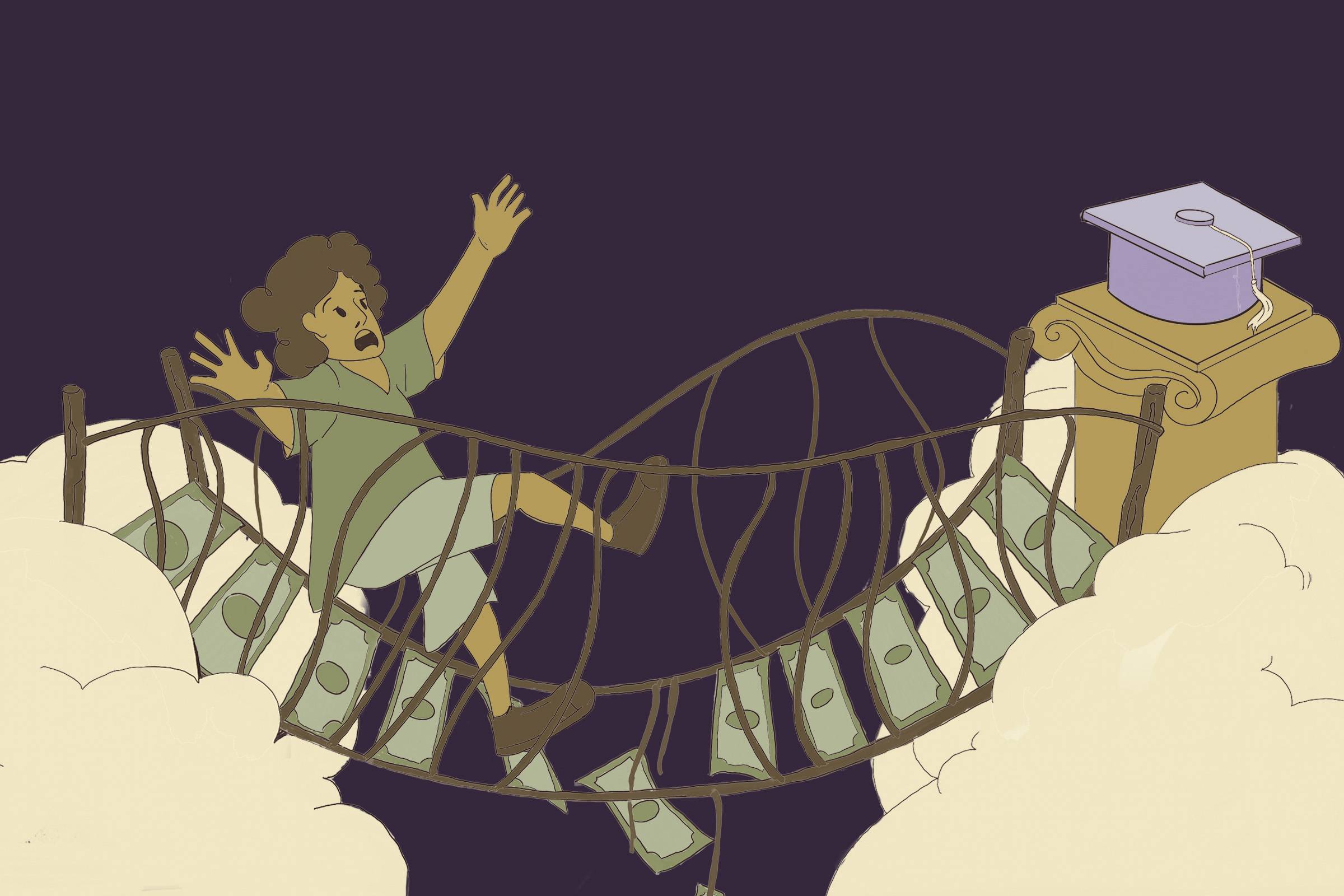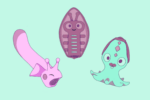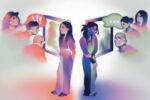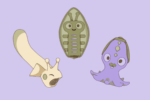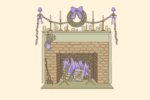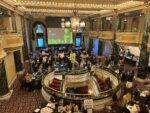
Maria Cantoni, “Arbanelle, 2012.” Slides, glass jars, olive oil. Photo by F staff photographer Chris Johnson.
Six claustrophobic feet separate the two white hallway walls that line the opening of “Opening the Black Box: The Charge is Torture,” an exhibition organized by Chicago Torture Justice Memorial Project, an activist group that seeks justice for the victims of torture by the officers who worked under former Chicago Police Department Cmdr. Jon Burge.
Painted black lines connect a timeline that starts in 1972 and lists the specific historical events of Jon Burge’s torture squad, as well as the subsequent court cases and activist groups’ motions and demonstrations. “TORTURE BEING DID” — one of the copies of handwritten official police statements by the victims — offers a stick figure illustration of a handcuffed victim with a shotgun forced into his mouth.
Above the timeline large, printed letters read “I AM A MEMORY.” Treated to look as burned material, the piece, by Flavio Rodrigues, gives the wall a fragile feeling. The combination creates a sense of urgency, or distress; a type of undoing that defies description.
Down the hall architecture proposals cover a wall, all of which visually and textually imagine public memorials in honor of the Chicago torture victims. Digital prints illustrate virtual spaces with a variety of site-specific sculpture: fists breaking chains, reflective stone surfaces, conceptual boulders in the middle of green space, and even a simulated black room with a single chair. Coupled with the timeline, the show stands in between a political pedagogy of public awareness for future action, and the private act of mourning and healing a past.
But how can this commemoration be accomplished? Will a memorial merely diffuse a feeling into public space in a desire to create a framework of social memory? The success of a dialogue between a public and the object is difficult to imagine from the proposals, and the effects of each piece would rely on the sculpture’s characteristics and relational existence in their respective public sphere. The proposals offer an opportunity for political action and public exposure of the private torture act — an inversion that offers a possibility for hope and for healing. Perhaps this was also the “proposed” space of “The Black Box,” a form of social practice, where art and life meet usefulness. In the midst of chaos and trauma, the exhibition space distills time, making room for a conversation, and the responsibility to engage with it is placed upon both the political and the public sectors.
In the smaller attached gallery spaces the conversation between public and private is continued. Rebecca Keller’s “Soft Prod,” a large, yellow cow prod (once used to electrocute victims) has a green felt tip and is stuffed with packing peanuts. It hangs vertically with uncharged impotence. Maria Cantoni’s “Arbanelle” preserves photographic slides in small jars of olive oil, all of them showing sites where torture happened in the city. Peering into them, the refraction from the light and the oil interrupt a clear image. On the wall, photos of cow prods, typewriter covers and other objects once used to torture the victims, confront the viewer. Their own, cold objecthood channels the physical remnants of pain; the viewer feels for a referent but is unable to find one.
In a more participatory way, Carol Frances Lung’s “A Stitch in Time” offers visitors the chance to help sew quilts that depict men and women holding a sign that reads: “New Trials for Burge Torture Victims.” Lung’s participatory piece aims to mediate a conversation between objects and memory. The same regenerative processes proposed in these installations are also apparent in Jim Duignan’s “Salve,” a small wooden box containing Aloe plants. During my visit a young girl enacted the safe space when she broke off a piece from the plant, lightly rubbing the aloe onto a cut on her forearm.
A constant search for empathy guides visitors through the galleries, a possible way of putting all the pieces together of a pain-filled puzzle. Tarik Elsahi’s large photograph “Gisant 3” captures a concrete male body that faces a wall in a fetal position, delivering a cold, deafening silence. Across the way, however, the photograph gains a voice from a video installation by Ivan Martínez, Mary Heinen and Tirtza Even titled “Sentence Worn, a segment,” a personal narrative from a young boy in a segregated cell. The video does not reveal his face, but his voice recounts the conditions of the cell, so cold that ice formed around the window, he says. Looking back and forth between the photograph and the video piece, one is again suspended in between states of knowing and unknowing.
The piece by the group Lucky Pierre, “100 Actions for Chicago Torture Justice,” includes metal plaques located throughout the space, with a comprehensive booklet hung on the wall. By flipping through the pages one finds various actions that invoke the psychological trauma of torture: “Action #3: Go to the pet store. Buy a puppy. Bring it home. Burn it with cigarettes.” This strikes a nerve in its attempt to approach and embody the feeling of torture, or the desire to inflict it on a living thing. As opposed to compassionate objects presented elsewhere, these “actions” present an unresolved emotional register.
Once a full loop has been made, the last wall to “Black Box” prominently features written columns of the names of the men who were tortured; some appear as “Unknown Victim.” Printed letters in pencil finally give way to some sense of identity, an encounter that brings one closer to a person but further away from understanding the pain he once felt.
On opening night the crowd surrounded the wall text, as two of the original victims signed their names.Their exposure seemed to match both the political voice of the show, as well as its desire to heal. When exiting the exhibition, one of Lucky Pierre’s metal plaques leaves a final, lasting image: “Action #1: Bear Witness.”


